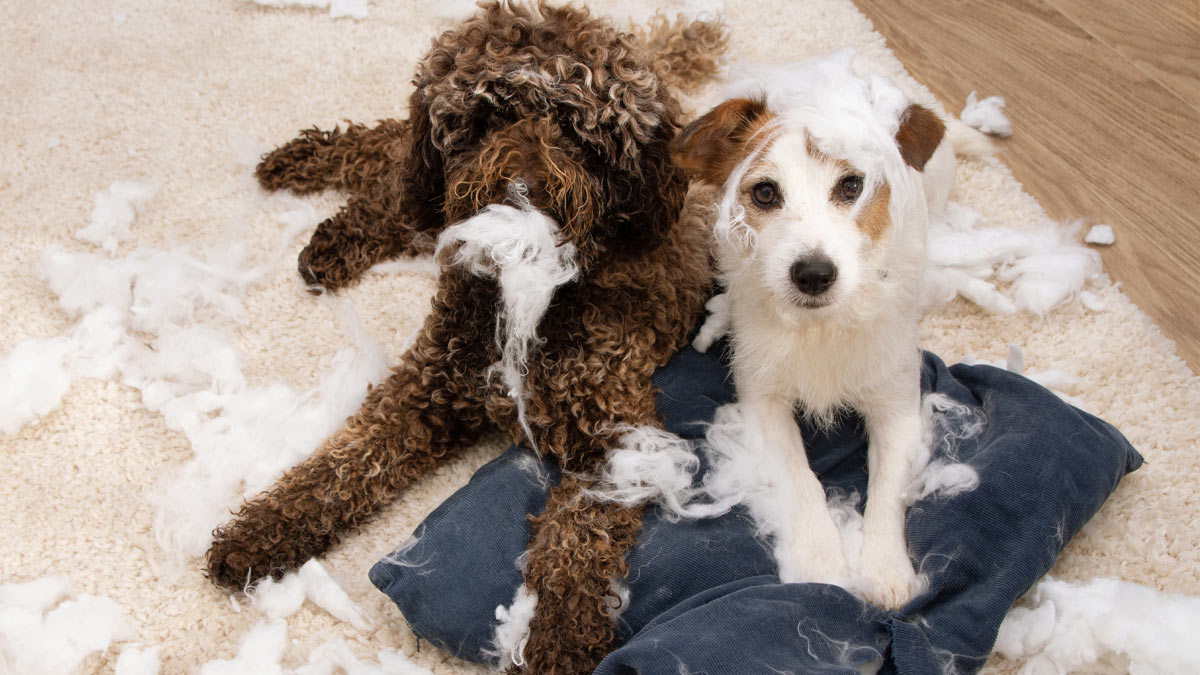If family members leave you behind when they go out for business, to dinner or maybe to the movies, do you pace and howl, chew on the dining room table or try to escape by scratching at the door? Probably not. More likely, you take on the household chores, watch some sports on TV or even read a book. Of course, you aren’t a dog.
Some of our lovable canine friends do all the things you don’t do when left home alone – and often quite a bit more. That’s because they suffer from a psychological condition that lives under the umbrella term “separation anxiety.”
If you are the “parent” of one of these hypersensitive dogs, you’re familiar with the symptoms. Left alone, some dogs are terribly concerned that the people they know, love and depend on are never going to return. If you believed that a run to the grocery store by family members meant you’d been abandoned forever, you might chew up some furniture, too.
What is this “separation anxiety,” and how can it be conquered? The answer to the first part of that question is easy to comprehend. When some dogs are left alone, they believe that you are never coming back. Until they are familiar with your lifestyle and daily routines, they jump to the conclusion that you’re going to be gone forever. They may even snarl and growl and try to keep you from leaving. If you do manage to get out of the house, while you’re gone, they might walk in circles, defecate and urinate indoors and dismember the antique rag doll your Aunt Millie gave you.
That’s not to say that separation anxiety is limited to Fido, Rover and Fifi. Some young children also suffer from separation anxiety, although they are much quicker than a pet to grasp the concept that you eventually will return.
Diagnosing separation anxiety in your dog isn’t tricky. If you leave your dog alone for an hour or two and come home to a scene of destruction and uncharacteristic behavior from your pet, you might have a problem.
But, according to Natalie Garber, Veterinary Specialty Care’s veterinary relations representative, “Before concluding that separation anxiety is your dog’s problem, it’s important that you first rule out other potential causes of his or her behavior, such as incomplete house training, urine marking, a medical condition or the side effects of any medications they might be taking.”
Once you have determined that separation anxiety is your problem, you’ll want to explore ways to calm your pet down so it won’t become manic whenever you leave the house. Garber said it’s possible to “counter-condition” your pet, “So that your leaving becomes a positive, not a negative. Try establishing a relationship between your departure and good things that your dog really likes. This tactic can be as simple as filling a bowl with his or her preferred food or making sure a favorite toy is easily available. Also, you can try a toy such as a Kong, which can be filled with small treats. The idea is for your dog to learn to associate your leaving him or her with good things, not bad.”
“Some trainers recommend tricking your pet by rattling your car keys, putting on your jacket, then not leaving. The idea is that your dog will learn that those cues don’t always mean your departure,” she said. “That might work if you live in a northern state and have to dress for the outdoors, but this is South Carolina. A smart dog won’t be fooled by your putting on a T-shirt and flip-flops! Most dogs are too smart for tricks.”
“Sometimes,” Garber added, “it may be necessary to consult with a certified dog trainer or a dog psychologist, if you can find one. But another way to lessen separation anxiety is to have a friend your dog is familiar with come over for a few hours or even consider enrolling your dog in a doggie day care.”
Whatever techniques you use try to help your pet through separation anxiety, it’s important not to make a big deal out of your arrival or departure. As Garber put it, “Low-key and calm are significant because your pet can pick up on your own concerns. Leave quietly and without fanfare. When you come home, don’t go overboard praising your dog, giving them belly rubs or offering treats.”
She concluded, “The sooner your dog begins to view your leaving and coming back as a common occurrence, the sooner he’ll shed that troublesome separation anxiety.”
HealthLinks is proud to have Veterinary Specialty Care as our official sponsor of our Healthy Pet; Happy Pet section. Veterinary Specialty Care provides around-the-clock veterinary services to our pets in need. For more information on Veterinary Specialty Care of Charleston, visit online at www.veterinaryspecialtycare.com or in person at 3163 W. Montague Ave. in North Charleston, 985 Johnnie Dodds Blvd. in Mount Pleasant or 319 E. 3rd North St. in Summerville or call 843-216-7554.







